When I became old enough to get around by myself – either taking the bus or riding one of many trusty bicycles – downtown Toledo was the place to go. Cut through Ottawa Park, take a harrowing ride through Auburndale, cut through the Old West End, and there you were. My parents never knew; if they had, they would have stopped those types of excursions in a hurry (but taking the bus was OK).
This was in the mid-1970s. By that time, though I didn’t realize it, downtown was already well on its way to being less of a destination and more of “what used to be, ” if that makes any sense. I say that because doing this website, and seeing hundreds of pictures of how downtown Toledo used to be, made me realize it was long gone before I showed up and started hanging out. When I started going, it was a mix of fading retail and huge empty buildings, one of which was the gigantic Waldorf Hotel, 310 Summit St., where Summit St. met Madison Ave., even though Madison didn’t go through to Summit anymore.
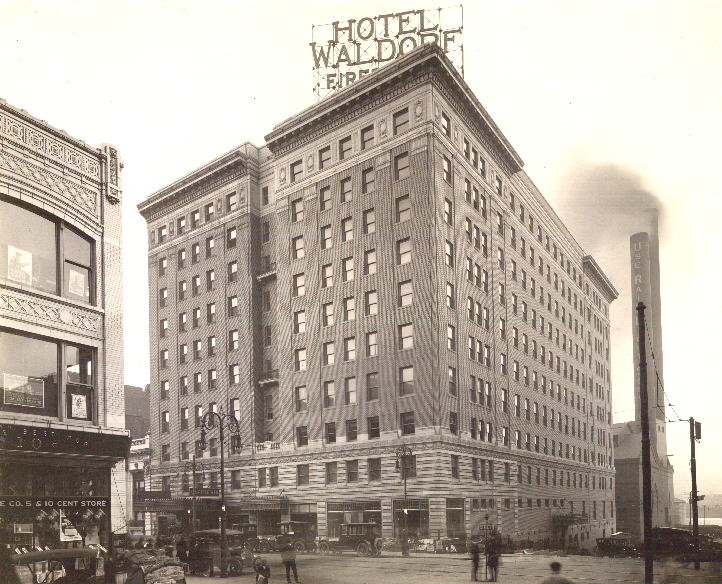
The Waldorf had an approximately sixty-year run in downtown Toledo. It opened on Sept. 14, 1916 with a splashy ad in the News-Bee the day before.
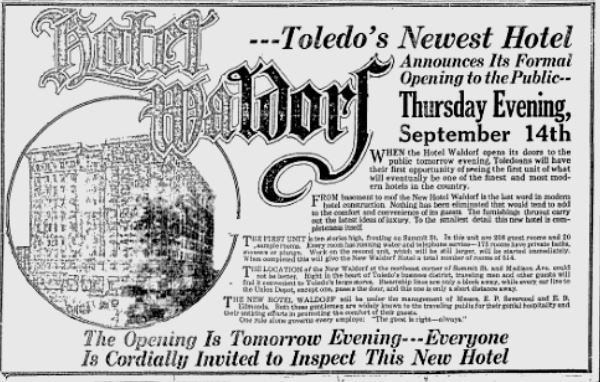
When the Hotel Waldorf opens its doors to the public tomorrow evening, Toledoans will have their first opportunity of seeing the first unit of what will eventually be one of the finest and most modern hotels in the country.
From basement to roof the New Hotel Waldorf is the last word in modern hotel construction. Nothing has been eliminated that would tend to add to the comfort and convenience of its guests. The furnishings throout carry out the latest ideas of luxury. To the smallest detail this new hotel is completeness itself.
The first unit is ten stories high, fronting on Summit Street. In this unit are 208 guest rooms and 20 sample rooms. Every room has running water and telephone service – 175 rooms have private baths, showers or plunge. Work on the second unit, which will be still larger, will be started immediately. When completed this will give the New Waldorf Hotel a total number of rooms of 514.
The location of the New Waldorf at the northeast corner of Summit St. and Madison Ave. could not be better. Right in the heart of Toledo’s business district, traveling men and other guests will find it convenient to Toledo’s large stores. Steamship lines are only a block away, while every car line to the Union Depot, except one, passes the door, and this one is only a short distance away…
One rule alone governs every employe: “The guest is right – always.”
It garnered a small editorial notice in the News-Bee.
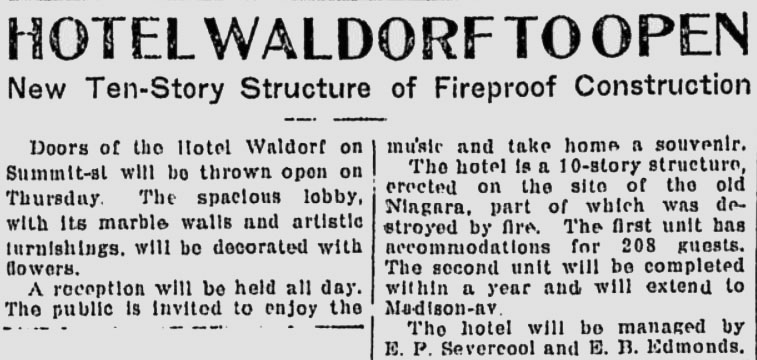
According to this article in the January, 1918 issue of The Hotel Monthly, the hotel was built at a cost of $1.25 million. Rooms at the time were $1.50 and up and was the third-largest hotel in Ohio at the time. The second unit was completed a couple of years later and brought the total number of rooms to 505.
“The lobby ceiling is 30 feet high. The room is overlooked from mezzanine. The walls are finished in French gray, the ceiling and frieze plastered in relief, the decoration of the Adam period, and relieved with vignettes of wedgewood blue. The wainscot is marble; the furniture walnut upholstered in blue velour stripe. A bronze rail borders the mezzanine,” according to the journal. Sounds nice. “The bar is 60′ x 110′, beautifully finished in walnut. It is one of the most richly appointed rooms of the kind in the state,” but probably didn’t see much business after Prohibition.
![]()
By the 1970s, however, the Waldorf had turned into a a long-term residence for many people. In this story about downtown redevelopment from 1974, Terrence Gallagher, a Toledo businessman who at the time owned the Valentine theater downtown, said talk of tearing down the Waldorf was a mistake, but added: “People live there because they want to, not because it’s cheap.” In the same day’s paper, the want ads revealed you could stay at the Waldorf for $21.50 a week, which sounds cheap to me; that’s about $87 a week in 2019 dollars.
According to Toledo’s Attic, the hotel was purchased by the city in 1976 and demolished in 1979 for the construction of the Toledo Trust building. The Waldorf closed for good on October 31, 1977, according to this Blade story, after it started notifying the 40 remaining residents they’d need to leave.
A post about The Waldorf on a Facebook Toledo group has someone recalling (with great accuracy) it was demolished in the spring of 1979, which is, unfortunately, all I remember about it, its glory days having long since passed. Whatever the timing, the Waldorf sat empty for quite a while until it was demolished.
Finally, it is worth mentioning that the Waldorf was built on the site of the Niagara Hotel, which suffered a sensational fire on April 4, 1915, which killed two people.
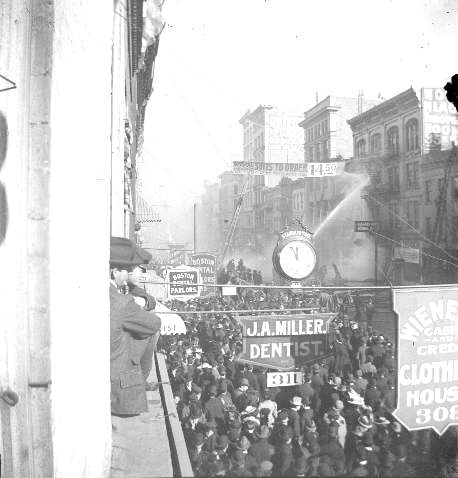
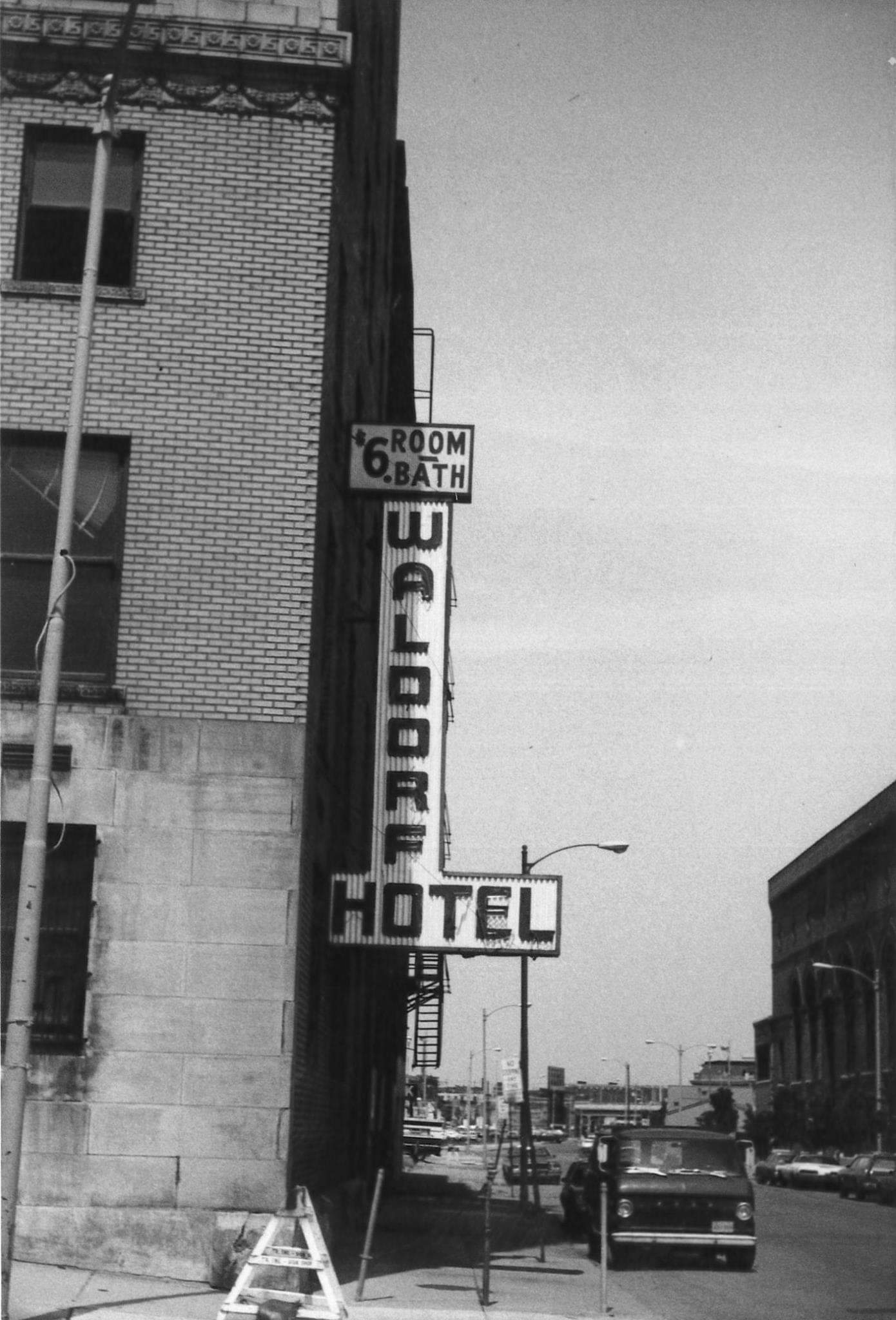
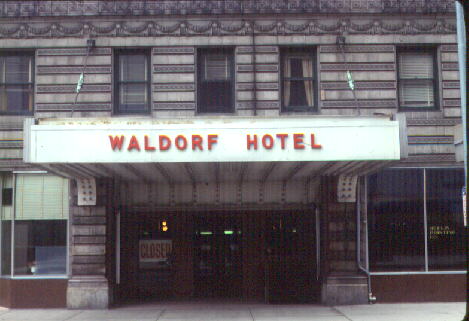
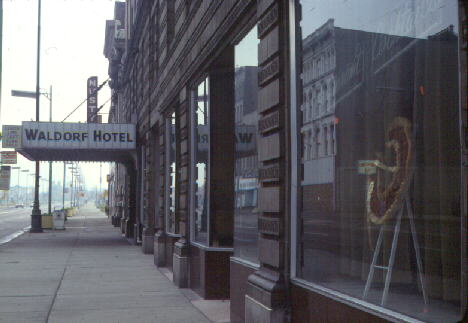
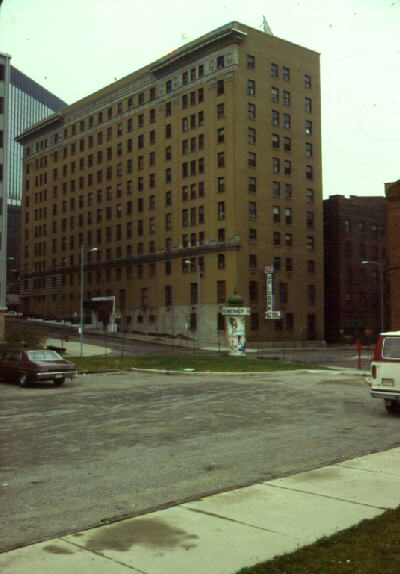
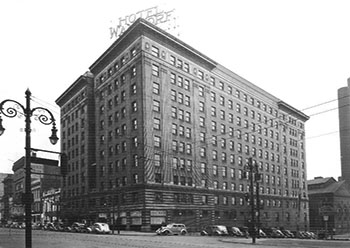
Really good article on the old Waldorf. Thanks for the memory.
lou
I lived at the Waldorf during it’s resident period in the 70’s and worked at the front desk at the Commodore Perry Hotel. ❤️
My family spent the Summer of 1971 in the Waldorf. My dad was working as an iron worker all over the Great Lakes region and using the Waldorf as a headquarters.
When school let out, my mom, two brothers and I drove from New Orleans to Toledo. It was the first time my brothers and I had been any farther north than South Carolina. I was 9 years old. What an adventure it was.
Oh my brother Doug and I used to cut through Ottawa Park on our Schwins and check this place out. Really neat stuff, used to run through it with the DEVILIBUS boys later in life as well. Thanks for the memories, I’ll have to share with Doug!!!!
Was there a hotel in Toledo in the 1920’s, the had a ballroom on the roof?
Nicely done. In the early 7o’s, I worked at several of the King Warehouse locations, along side of men who were residents at the Waldorf. A hard working crowd, indeed.